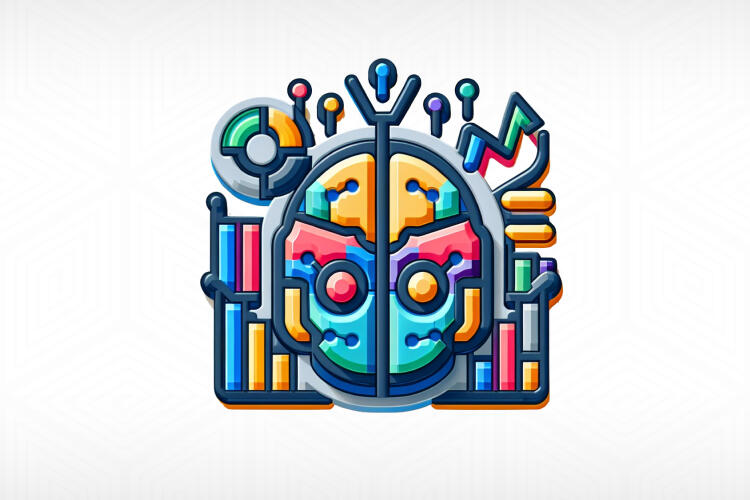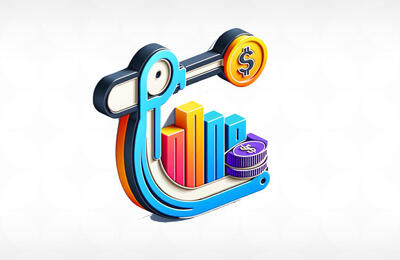
Can artificial intelligence predict the behavior of financial markets? An affirmative answer to this question is no longer a surprise. Traders are more interested in how they can use AI stock trading and how fast this technology is developing. After all, the new capabilities of artificial intelligence mean more profits for those who can use them. Let's have a closer look at how algorithms can be helpful in stock trading.
What Is Machine Learning?
This is a branch of science that focuses on the study of AI capabilities, in particular, its ability to learn. The main focus is on performing tasks without explicit instructions, which is made possible by using previously processed information. Machine learning is used in various areas of AI activity, but it is most effective in commercial tasks. Computational statistics is an important source of such work. Machine learning has a mathematical basis, as it is provided by mathematical optimization methods, data mining, and intelligence analysis of information.
How Do AI Bots Work?
Stock prices are influenced by many factors, such as the economy, politics, natural phenomena, the financial performance of various companies, and unexpected events that cannot be predicted. In addition to the last point, the development of all these factors can be forecasted and analyzed by an AI bot. Stock market trends have certain patterns. It is not surprising that a huge number of analysts study them. If people do it, why can't artificial intelligence do the same computational work?
The answer to this question is the development of algorithmic trading. Its peculiarity is that traders use predefined automated strategies. This significantly increases the efficiency of investment decisions and, consequently, reduces financial risks. The development of algorithms and their research is ongoing. Therefore, investment and fintech companies are now competing with each other not only in terms of the quality of their employees but also in terms of the efficiency of artificial intelligence.
How to Use AI Bots in Trading?
Artificial intelligence is an effective technology, but you need to know how to make the most of it. Before using algorithms in trading, you need to define your own business goals, as the efficiency of artificial intelligence directly depends on the clarity, conciseness, and logic of commands. Without a detailed trading goal, it is almost impossible to set the right tasks for AI.
Algorithms can be used for the following tasks:
- Stock trading;
- Forecasting changes in the market;
- Researching customer habits;
- Analysis of stock price dynamics.
The Best Models for Stock Trading
Different approaches to machine learning are used in financial markets. Let's have a closer look at the most popular ones.
Traditional Machine Learning
Among the various approaches, the traditional one is worth paying special attention to. It is characterized by the use of relatively precise algorithms that are most effective when analyzing large amounts of data. They will be especially useful when integrated into hybrid models, where the combination of different algorithms provides the maximum effect. Each of them specializes more in a particular area of stock trading. For example, some are better at analyzing historical data, while others are better at detecting market trends. However, these programs cannot identify various anomalies and special outliers.
Support Vector Machine
This algorithm uses supervised learning with examples of input and output data. This is known for its accuracy in analyzing large amounts of information. However, for dynamic or complex scenarios, it can be inaccurate.
Naive Bayesian Classifier
This option is particularly convenient and effective for analyzing a small amount of data. It determines the likelihood of one event influencing another and can also be used in financial markets.
Random Forest
The algorithm achieves a high level of accuracy when analyzing large amounts of data. It is often used for regression analysis, which means identifying relationships between several variables. Such machine learning is particularly useful for stock price predictions.
ARIMA
This is a time series technique. It works well for predicting short-term price fluctuations in financial markets. The model operates based on past trends and specializes in long-term forecasts. However, its weakness is that the model does not always work well with non-linear data.
K-nearest Neighbor
The algorithm predicts market behavior based on records of the most similar historical situations. They are called “neighbors.” Hence, the name of the model.
What Is Deep Learning?
Essentially, it is an advanced version of machine learning. This model uses complex sets of algorithms that are somewhat similar to the functioning of the human brain. They are called artificial neural networks. Compared to other models, these algorithms provide a much higher level of data analysis.
They use a system of interconnected units, often called artificial neurons, whose main function is to exchange information. In this case, there are input and output units and hidden layers between them.
Types of Deep Learning Models
The simplest neural networks have several hidden layers. Deep models can include hundreds of layers. They can be used to process large amounts of data, which is especially effective for predicting stock prices. Let us consider the most effective types of deep learning models.
Recurrent Neural Networks
This is a special type of artificial neuron. Their advantage is that each processing node is essentially a place to store information. This makes it possible to store, process, and send information quickly.
Long Short-term Memory
This algorithm is quite promising for predicting stock market behavior. It can process complex data sequences and, thus, analyze non-linear time series. This makes it possible to predict volatile price fluctuations in the market.
Graph Neural Networks
The peculiarity of such algorithms is that they process data in the form of graphs, each node of which represents a word or pixel. This transformation is quite complex and can lead to a decrease in the quality of information processing. However, with the help of these algorithms, financial analysts can easily visualize data.
Even though stock markets are characterized by a lack of clear patterns, volatility, and instability, artificial intelligence remains a useful tool for analyzing stock prices. More and more trading companies are using this technology for market analysis and machine learning, which, in turn, significantly increases the efficiency of stock trading.















